Yes, Locs can be considered a protective style as they help to protect natural hair from damage and promote hair growth. Locs, also known as dreadlocks, are a popular natural hair style that offer a range of benefits, including acting as a protective style.
By tightly coiling or matting the hair, locs create a barrier that shields the strands from environmental elements and manipulation, which can lead to breakage. This protective effect can be particularly beneficial for individuals with delicate or fragile hair textures.
Additionally, locs can aid in hair growth by minimizing hair handling and reducing the need for excessive styling and heat usage. With proper maintenance and care, locs not only provide a unique and stylish look but also contribute to the overall health and well-being of natural hair.
The Benefits Of Locs As A Protective Style
Locs are not only a protective hairstyle but also a means of celebrating the beauty of natural hair. Their low-maintenance nature, moisture-retaining properties, and protective benefits make them a popular choice among those seeking a versatile and health-conscious hairstyle.
1. Reduced Manipulation for Healthier Hair
Locs require minimal manipulation, which promotes healthier hair growth and reduces the risk of breakage. With less combing and styling, your hair is subjected to less stress.
2. Moisture Retention
Unlike some other hairstyles that may lead to dryness, locs help retain moisture in the hair. The tightly coiled structure of locs prevents moisture from escaping, keeping your hair nourished and hydrated.
3. Protection from External Elements
Locs act as a natural barrier, protecting your hair from external elements and environmental damage. They shield your hair from harsh weather conditions, such as wind and cold, as well as harmful UV rays.
4. Length Retention
With locs, you can retain length as the hairstyle discourages excessive hair trimming. This can be especially beneficial if you’re aiming for longer hair.
5. Low Maintenance
Locs are a low-maintenance hairstyle, saving you time and effort in daily styling routines. This is particularly advantageous for those with busy lifestyles.
6. Versatility and Customization
Locs offer versatility and customization. You can experiment with different lengths, sizes, and even colors to suit your personal style and preferences.
7. Appreciation of Natural Beauty
Allowing locs to evolve naturally allows you to appreciate the beauty of hair in its simplest form. It’s a stress-free and liberating way to embrace your natural hair texture.
Factors To Consider Before Choosing Locs As A Protective Style
Hair Texture and Thickness
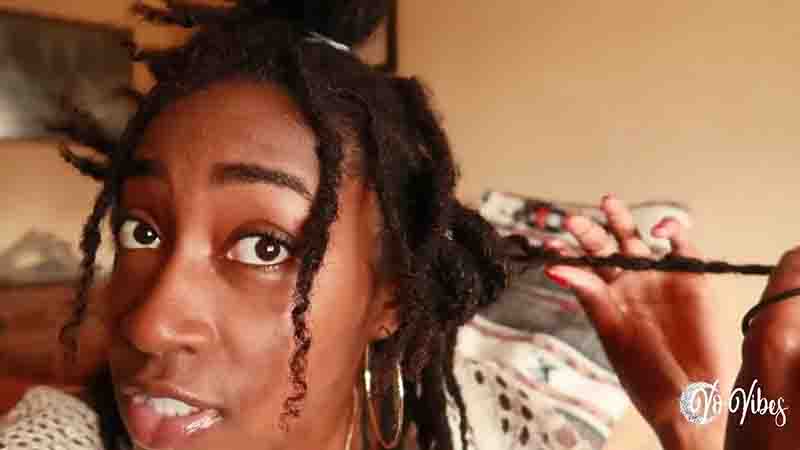
Consider your natural hair texture and thickness. While locs can work well with various hair textures, certain types, like kinky or coily hair, may be more conducive to the locing process and require less maintenance.
Lifestyle and Desired Maintenance Level
Evaluate your lifestyle and how much time and effort you are willing to commit to loc maintenance. Locs necessitate regular retightening, moisturizing, and care. Ensure that this level of maintenance aligns with your daily routine and preferences.
Commitment to Long-Term Styling
Recognize that locs are a long-term hairstyle that requires patience and dedication. If you’re seeking a short-term protective style or enjoy changing your look frequently, locs may not be the best choice for you.
Personal Style and Aesthetic Preferences
Consider your personal style and aesthetic preferences. Locs come in various sizes, lengths, and styles. Think about the type of locs that resonate with your style and how you’d like to express your individuality through this hairstyle.
Cultural and Spiritual Significance
For some individuals, locs carry cultural or spiritual significance. If this applies to you, factor in the cultural or spiritual aspects of locs when making your decision.
Professional Considerations
Assess how locs may impact your professional life. While locs are a beautiful and natural hairstyle, it’s important to be aware of any workplace policies or biases that may affect your career. Research your company’s dress code and consider potential reactions from colleagues or superiors.
Consultation with a Professional
If you are unsure whether locs are the right choice for you, consider consulting with a professional stylist or loctician. They can assess your hair type, discuss your preferences and goals, and provide personalized recommendations.
Maintaining Healthy Locs As A Protective Style
Maintaining healthy locs is essential to keep them looking great and promoting hair health. Here are some important maintenance practices to follow:
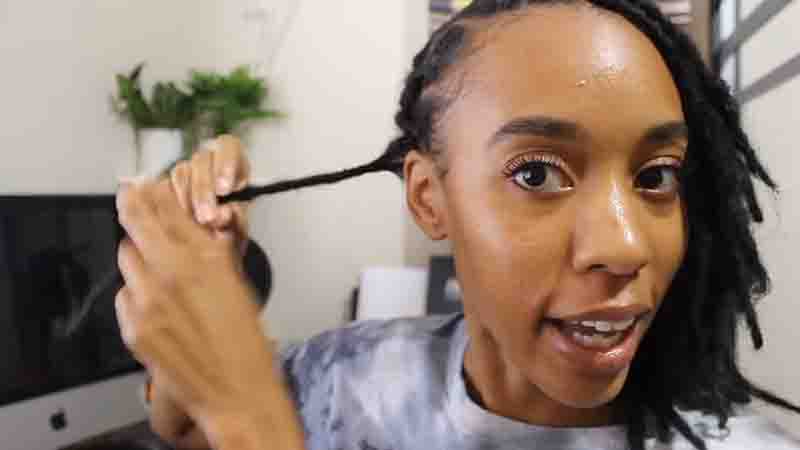
1. Regular Washing
Use a clarifying shampoo to cleanse your locs and remove buildup. Regular washing prevents residue accumulation, which can make locs heavy and dull.
2. Proper Conditioning
Apply a moisturizing conditioner to the ends of your locs to prevent dryness and breakage. Conditioning keeps your locs soft and manageable.
3. Thorough Drying
After washing, ensure your locs are thoroughly dried to prevent mildew or odor. Air drying or using a low-heat dryer is recommended.
4. Scalp Massages
Regular scalp massages stimulate blood circulation and encourage hair growth. You can enhance the benefits by using natural oils like jojoba or tea tree oil during the massage.
5. Minimal Manipulation
Avoid excessive manipulation and tension on your locs. Tight hairstyles like ponytails or buns can stress the locs and lead to damage. Opt for looser styles to reduce tension.
6. Avoid Chemicals
Stay away from harsh chemicals, dyes, or products containing alcohol, as they can weaken and damage your locs.
7. Retightening
Depending on the method used to create your locs, you may need periodic retightening. Consult with a professional loctician to determine the right retightening schedule for your locs.
8. Protect Your Locs at Night
Use a satin or silk bonnet, scarf, or pillowcase to protect your locs while sleeping. This reduces friction and minimizes damage.
9. Regular Trimming
Periodic trimming helps remove damaged or split ends, promoting healthy locs. Consult with a stylist or loctician for guidance on when and how to trim your locs.
10. Professional Maintenance
Consider visiting a professional loctician or stylist who specializes in loc care. They can provide expert guidance on maintaining your locs and addressing specific concerns.
Are Locs Suitable For All Hair Types
Locs are a versatile hairstyle that can be achieved on various hair textures, including straight, wavy, and curly hair. However, the compatibility and maintenance of locs may vary depending on your hair type. Here’s a closer look at how different hair textures can work with locs:
1. Straight Hair
Straight hair may require additional techniques and maintenance to encourage the formation and holding of locs. It can be more challenging for straight hair to naturally lock on its own. Techniques like backcombing, twisting, or braiding may be used to initiate the locing process.
Regular maintenance, such as re-twisting, may be necessary to prevent unraveling and promote the maturation of locs.
2. Wavy Hair
Wavy hair can form locs, but it may require more effort to prevent them from unraveling due to the natural waviness. The use of appropriate loc-starting methods, like two-strand twists, can help wavy hair hold locs.
Regular re-twisting and maintenance are important to keep locs intact and encourage the desired pattern.
3. Curly Hair
Curly hair is well-suited for forming locs naturally. The coiled and textured nature of curly hair allows it to lock and hold shape more easily.
Curly hair often requires less effort in the initial loc-forming process and may require less frequent re-twisting compared to straight or wavy hair.
Celebrity Hairstyles And The Popularity Of Locs As A Protective Style
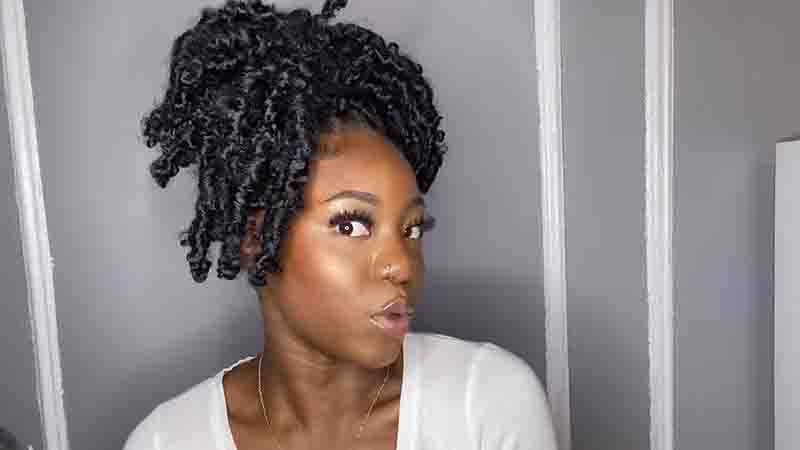
Celebrities have played a significant role in popularizing locs as a protective and stylish hairstyle. Their endorsement of locs has not only shaped trends but has also had a substantial impact on how this hairstyle is perceived in mainstream culture. Here’s a closer look at the influence of celebrities on the acceptance and popularity of locs:
1. Elevating Status
Celebrities who proudly wear locs have elevated the status of this hairstyle. By showcasing locs on red carpets, in movies, and in music videos, they have demonstrated that locs can be both fashionable and functional.
2. Inspiration for Many
The choice of these influential figures to wear locs has inspired countless individuals to explore this protective hairstyle. People from various backgrounds and ages have been encouraged to embrace locs as a stylish and versatile option.
3. Impact on Perception
The influence of celebrities has gone beyond their admirers, reaching a broader audience through media, fashion magazines, and social platforms. As a result, locs have gained recognition as a valid and fashionable choice, breaking free from prior stereotypes or misconceptions.
4. Representation Matters
Celebrities wearing locs have contributed to better representation in the world of entertainment and fashion. This visibility has empowered others to confidently wear their locs, regardless of societal expectations or biases.
5. Expanding Cultural Awareness
The acceptance of locs by celebrities has also contributed to the expansion of cultural awareness. Many individuals have learned about the rich history and significance of locs within various cultures, fostering a deeper appreciation for this hairstyle.
| Iconic Figures Who Have Embraced Locs | Impact on Perception and Acceptance |
| Zendaya | Locs are seen as a fashionable hairstyle suitable for red carpet events. |
| Lenny Kravitz | Locs are recognized as a masculine and rockstar-worthy choice. |
| Whoopi Goldberg | Locs are celebrated as a symbol of self-expression and empowerment. |
From celebrities like Zendaya, Lenny Kravitz, to Whoopi Goldberg, the influential power of these figures in promoting locs as a protective style cannot be understated. They have shattered preconceived notions and encouraged individuals to confidently embrace this hairstyle.
The increasing popularity of locs as a protective style signifies a profound shift in mainstream culture’s acceptance of diverse hairstyles. Through the influence of celebrities, locs are now recognized as a powerful form of self-expression and a beautiful choice for anyone seeking to protect and style their hair.
Common Misconceptions About Locs As A Protective Style
Locs are a unique and versatile hairstyle that deserves to be celebrated without misconceptions or stereotypes. Here, we debunk common myths surrounding locs:
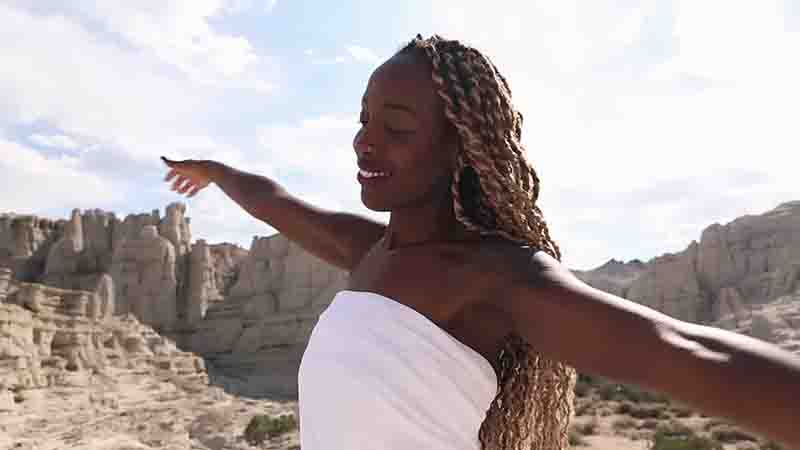
1. Limited Styling Options
Myth: Locs offer limited styling possibilities.
Reality: Locs can be styled in various ways, including updos, braids, twists, and accessorized with beads or wraps. Dyeing locs is also an option for those seeking a change.
2. Hygiene Concerns
Myth: Locs are dirty or unclean.
Reality: Like any other hairstyle, clean and healthy locs are achievable with proper care. Regular washing, conditioning, and drying are essential for maintaining clean and fresh locs.
3. Unprofessional Appearance
Myth: Locs are unprofessional in a corporate or formal setting.
Reality: Locs can be styled neatly and professionally, making them suitable for any environment. Their acceptance in various professional fields is growing.
4. Permanent Hairstyle
Myth: Once you have locs, you can’t change your hairstyle.
Reality: While locs are a long-term commitment, they can be combed out or cut if you decide to change your hairstyle.
5. Unkempt Appearance
Myth: All locs look messy and unruly.
Reality: The appearance of locs can vary widely depending on maintenance. With proper care, locs can look neat and well-groomed.
6. Cultural Appropriation
Myth: Wearing locs is cultural appropriation.
Reality: Locs have been embraced by various cultures worldwide, and they can be worn respectfully by individuals of any background.
How To Start And Maintain Locs As A Protective Style
Starting locs as a protective style offers several methods to choose from, each with its own advantages and considerations. Let’s explore the common methods for starting locs and essential tips for maintaining healthy locs:
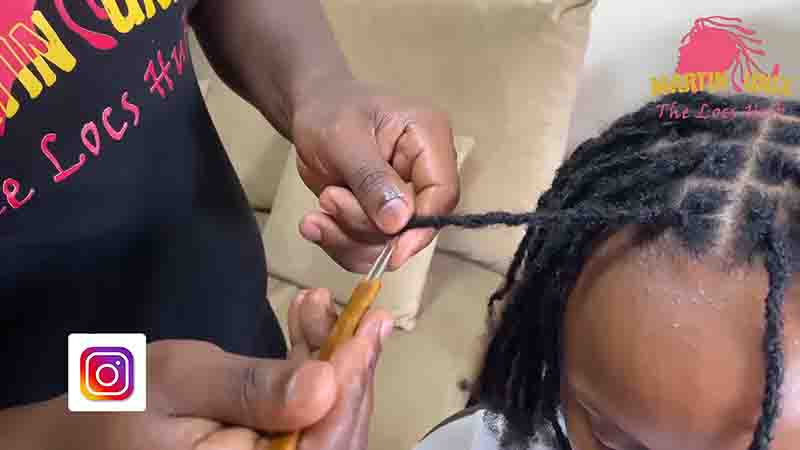
1. Freeform/Neglect Method
- Method: Allow the hair to naturally form into locs without manipulation.
- Pros: Minimal maintenance, unique and organic loc formation.
- Cons: Takes longer for fully matured locs to develop, potential for irregular loc sizes.
2. Twist and Rip Method
- Method: Section the hair and twist each section to create locs.
- Pros: More control over loc size and shape, quicker than freeform method.
- Cons: Requires more maintenance in the initial stages, may cause some tension on the hair.
3. Interlocking Method
- Method: Use a tool to tighten the roots of the locs.
- Pros: Quick and efficient, neat appearance.
- Cons: May cause more tension on the hair, requires specific tools and skills.
Alternatives And Variations To Traditional Locs As A Protective Style
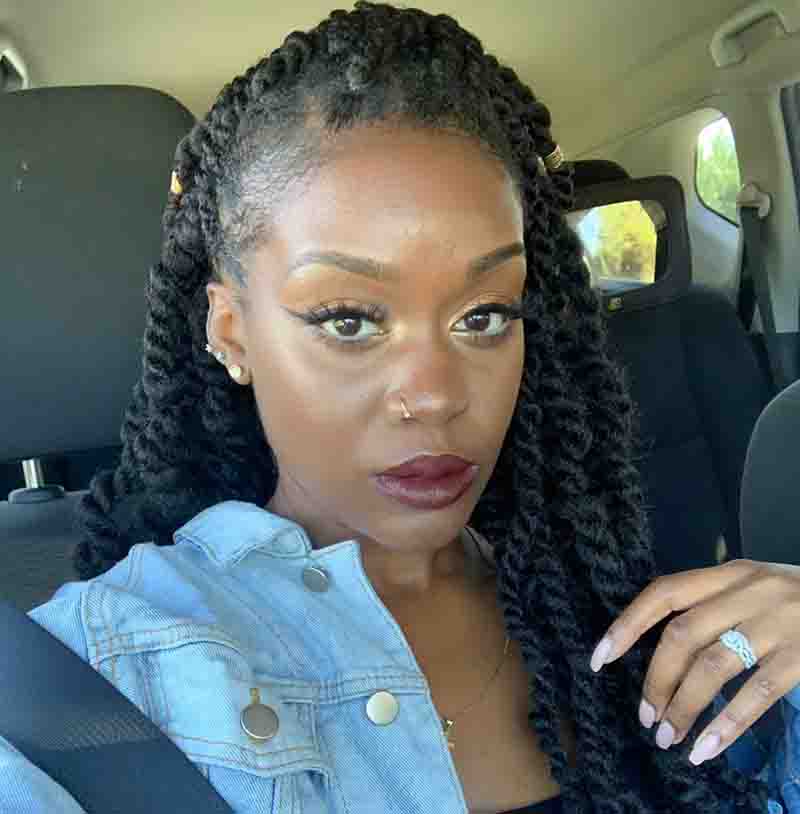
Sisterlocks
- Maintenance: Sisterlocks are smaller and more uniform than traditional locs, requiring meticulous parting and retightening every 4-6 weeks.
- Appearance: They result in thin, tightly coiled locs that provide a neater and more controlled appearance.
Interlocks
- Maintenance: Interlocks use a tool to tighten the roots of the locs, offering a neater appearance but potentially causing more tension on the hair.
- Appearance: These locs are often uniform in size and tightly maintained.
Freeform Locs
- Maintenance: Freeform locs require minimal maintenance and manipulation. They form naturally without intervention.
- Appearance: This method results in a more organic and unique appearance with irregular loc sizes and shapes.
Colored Locs
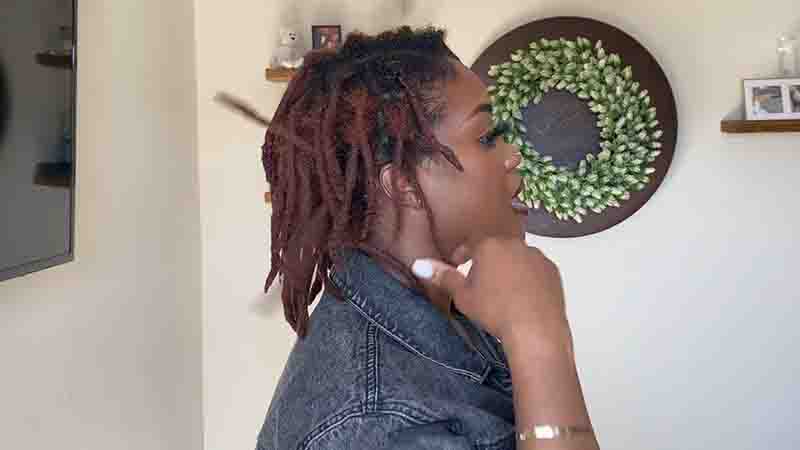
- Maintenance: The maintenance for colored locs is similar to traditional locs, with the added consideration of color preservation.
- Appearance: Colored locs can be customized with various shades and patterns to add a unique and vibrant touch.
FAQ
Dreadlocks can be considered a protective style for some individuals, as they can help protect the natural hair from excessive manipulation and styling, reducing the need for daily combing or brushing, which can lead to breakage. However, the level of protection may vary based on how they are installed and maintained.
One disadvantage of dreadlocks is that improper installation or maintenance can cause tension on the scalp, leading to breakage or hair damage. They can also take a longer time to dry, potentially leading to mildew or unpleasant odors if not properly cared for.
Properly maintained and cared for locs are not inherently damaging. However, if installed or maintained incorrectly—such as excessive tension during installation or infrequent washing and maintenance—locs can cause damage to the hair and scalp.
Locs themselves do not break hair, but improper installation or maintenance, such as excessive tension or infrequent washing, can cause breakage.
Braiding over locs can be healthy if done carefully. It can offer a stylish way to protect the locs, especially during physical activities or when trying to achieve a different look. However, too much tension from the braids can potentially cause damage to the roots of the locs.
Dreadlocks and braids offer different benefits. Dreadlocks are a long-term style that requires less manipulation and maintenance once fully matured. On the other hand, braids are a temporary style and allow for more versatility in styling. The choice between the two depends on personal preference and desired maintenance level.
Braiding starter locs can be acceptable for certain hair types. However, it’s crucial to ensure that the braids are not too tight to avoid putting excess tension on the new locs and causing damage to the hair.
People may prefer dreadlocks for various reasons, including cultural significance, low maintenance once matured, a unique and natural aesthetic, and the freedom from daily styling and manipulation.
Clean and properly maintained dreadlocks can be hygienic. Regular washing and proper drying are essential to prevent odor and mildew, ensuring a healthy and hygienic environment for the scalp.
Dreadlocks do not inherently make hair grow faster. However, due to reduced manipulation and breakage, some individuals may notice an apparent increase in length retention over time.
Water is essential for hydrating and maintaining healthy locs. It helps to keep the hair moisturized, especially when used in combination with natural oils or specific loc-friendly products.
The duration of a protective loc style varies depending on the technique used and how well it is maintained. It can last anywhere from a few weeks to several months.
The choice between locs and dreads depends on personal preference and lifestyle. Both styles have their advantages and considerations. Locs usually refer to the more mature, fully developed style, while dreads can encompass the earlier stages or even a different approach to styling.
Well-maintained and properly installed locs do not damage hair. However, negligence in maintenance or incorrect installation techniques can cause damage.
Once matured, locs can be relatively low-maintenance compared to many other styles, requiring less daily upkeep and product usage. However, regular washing and occasional maintenance are still necessary.
The choice between locs and braids depends on personal preference, lifestyle, and desired maintenance. Locs are a long-term style, while braids offer more versatility and are a temporary option.
Having locs can be a great choice for individuals seeking a low-maintenance, natural, and distinctive hairstyle. They can also be a symbol of cultural identity and personal expression.
Hair growth is not necessarily faster with locs, but due to reduced manipulation and breakage, some individuals experience better length retention.
Locs, when well-maintained, can last for several years and even a lifetime, depending on the individual’s commitment to care and upkeep.
Dreadlocks are formed from real hair. They are created by matting and locking the natural hair together, either through neglect (freeform) or intentional methods.
Healthy, well-maintained dreads are not unhealthy for hair. However, improper installation or neglect of maintenance can lead to damage and potential issues.
Disadvantages of dreadlocks can include the possibility of damage due to improper installation or maintenance, the potential for odor if not washed and dried properly, and the time-consuming process of drying after washing.
People may prefer locs over dreads for their mature, well-groomed appearance, as locs usually refer to the more established stage of the hairstyle.
Locs can be considered protective as they reduce the need for daily styling, manipulation, and heat usage, which can lead to damage and breakage of the hair.
Styling locs allows for versatility and creativity, offering a range of looks from updos to intricate patterns, beads, or wraps. It also helps in protecting the hair and showcasing individual style.
Well-maintained dreads can contribute to healthier hair by reducing daily manipulation, breakage, and exposure to damaging styling practices.
Locs themselves don’t inherently cause hair to grow faster. However, reduced manipulation and breakage associated with having locs can contribute to better length retention over time.
The duration a loc style can be kept in varies based on the type of style and personal preference. It could be from a few days to several weeks.
The frequency of trimming locs can vary for each individual. Trimming is usually done to remove damaged or weak areas and may be needed a few times a year.
People may cut their locs for various reasons, including desiring a different style, addressing severe damage, or as a personal choice to embrace change.
The best thing about locs for many individuals is their versatility, cultural significance, and the minimal maintenance required once they’re matured.
Oil can be applied to locs to keep them moisturized, but applying oil every day might lead to buildup. The frequency of oiling your locs should depend on their dryness and your hair’s needs.
While matured locs require less daily maintenance compared to some other styles, they do require regular washing, occasional retwisting, and careful attention to avoid buildup and keep them healthy.
Braiding your dreads can offer a protective style and reduce manipulation, potentially aiding in length retention. However, braiding alone doesn’t directly cause hair to grow faster.
Dreadlocks can create an appearance of shorter hair due to the coiling and knotting of the strands. However, well-maintained locs should not cause actual hair loss.
The frequency of touching up or retwisting locs depends on hair type and the desired appearance. It can range from every few weeks to a few months.
A retwist can last for several weeks, but this can vary based on hair type, the tightness of the retwist, and the individual’s activity level.
You can moisturize locs by using water-based or natural oil-based sprays or applying a small amount of oil to the hair, focusing mainly on the ends to prevent dryness.
Yes, over time, locs may thicken and mature, appearing larger due to the continued locking and coiling of the hair strands.
Dry locs might feel brittle, rough, or stiff to the touch. They may also appear dull and lack the natural sheen of healthy, moisturized hair.
The best length to start dreads varies for each individual. Hair length can influence the speed of the locing process. Generally, having at least 4-6 inches of hair is recommended for most methods of starting dreadlocks.
Conclusion
Locs can be considered as a protective style for various reasons. They offer a natural way to preserve and protect hair, reducing the need for harsh chemical treatments. Furthermore, locs can promote hair growth by minimizing breakage and protecting the ends of the hair from damage.
Overall, embracing locs as a protective style can be a wise choice for those seeking a low-maintenance yet stylish hair regimen.

